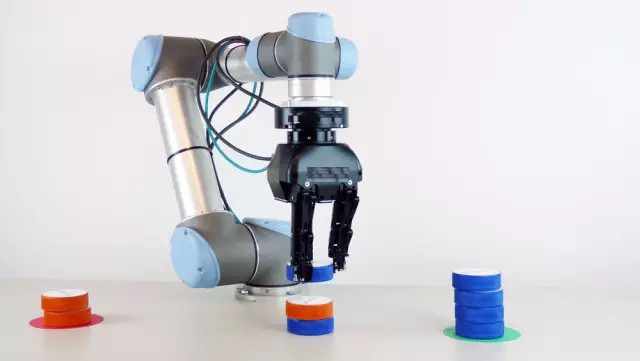
2023-01-12
With the development of industrial technology, robots are more and more widely used. Their efficient work efficiency has greatly improved the production capacity of enterprises. However, industrial robots can not detect their surrounding environment well. They need to be combined with professional instruments to achieve certain functions. As more and more different sensors are introduced to robots, robots become more sensitive and intelligent. Here is a brief introduction to five applications of force sensors in robots:
1. Constant force
The torque sensor was first manufactured for grinding, polishing and other applications. Because these applications are difficult to achieve automation, because robots need some force feedback to determine whether the force it pushes is enough.
By introducing a force feedback loop into the program, these applications can be easily automated and the consistency of the manufacturing process can be achieved. In this case, it is necessary to use an external device instead of the embedded solution provided by the robot manufacturer.
2. Target positioning
In practical applications, many users generally believe that the only way to locate and quantify parts is to use visual sensors. But in fact, this is not the only solution. It is undeniable that visual system is a good way to locate or quantify parts, but it is also feasible to use force sensor to find and detect parts. It is one thing to determine their position on the X-Y plane, and another to determine their height. In fact, to do this, we need a 3D vision system. If it is a pile of objects, you don't need to know the exact tree of the whole pile of objects, just go to the pile of objects every time. The robot only needs to determine the height of the pile of objects, and then continuously adjust its grasping height.
Another search function using the force sensor is the "free mode" of the sensor. This may be due to the failure to make full use of the parameters of the force-measuring sensor. "Free mode" or "zero gravity" mode can "liberate" the robot's axis, which will enable it to improve its compliance. For example, if you want to tighten a part on a CNC machine tool, you can free 2 shafts to make the part close perfectly while maintaining a certain grip. This makes all the forces act on the center of the parts, and there will be no additional forces acting on the axis of the robot.
3. Repeatability
If users are considering using robots for assembly tasks, they hope that robots can repeat the same tasks again and again. However, one of the reasons why it is difficult to automate assembly tasks is that they require operators to carry out force detection. The external force exerted during the assembly process can be felt by introducing a force sensor. Robots need to exert very precise force when installing batteries on mobile phones. Because these parts are easily damaged, it is really difficult to assemble them intact. This is why a very low force threshold should be set to prevent component dislocation and damage.

The above application is to separate the orange and blue ice hockey balls. However, the way we use it has nothing to do with their color. In fact, it's related to their weight. The orange puck is heavier than the blue puck. The sensor can distinguish them according to the weight.
This can also be used to distinguish different components with similar shapes. However, in real life, it is very helpful to know whether you have the right object in your grasp or whether the object has fallen. It can really help you in your production process. The torque sensor can easily achieve this.
5. Manual guidance
Most cooperative robots use built-in force sensors to achieve manual guidance, but traditional industrial robots do not have built-in sensors of this type. This is why traditional industrial robots need a force sensor. With it, you can guide the teaching robot manually without using the teaching device. As long as a force-measuring sensor is used, the robot teaching can be completed by setting the starting point and end point of the robot and the linear trajectory in the middle.
As we have seen so far, force feedback is very useful and can be applied to many different applications. You can analyze your workflow to see if you can use force sensor instead of visual system. Most of the time, the force sensor is easier to integrate and can be completed by the user without an integrator.